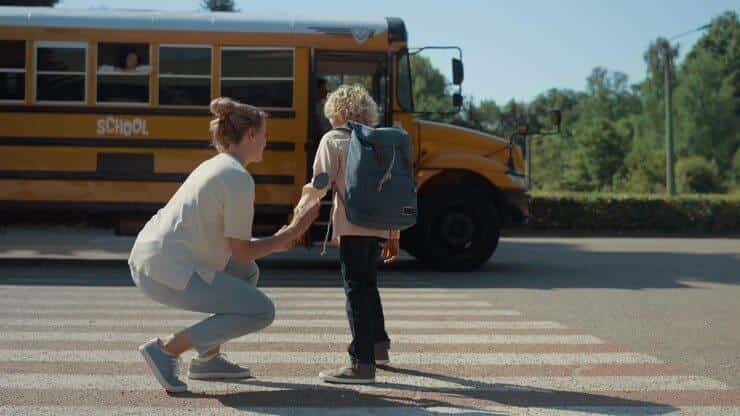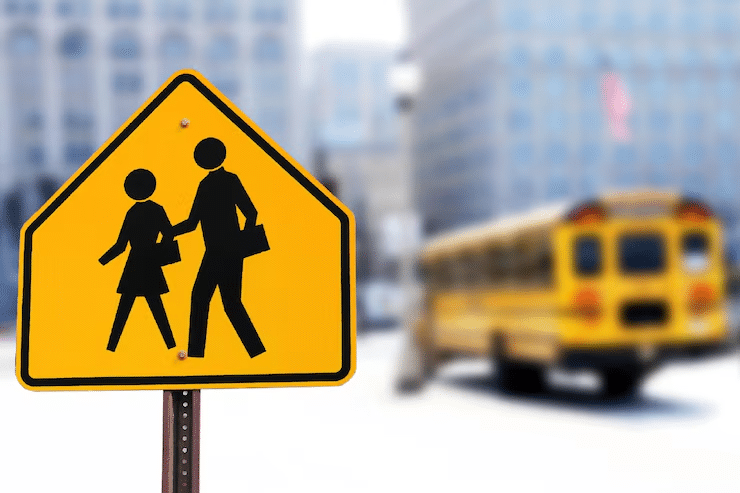
School buses are more than just a means of transportation; they are vital lifelines ensuring that students safely reach their educational destinations. In South Carolina, school bus regulations are meticulously designed to safeguard children and ensure seamless operational standards across the state. Understanding these regulations is crucial not only for those directly involved in student transport but for the entire community to foster a culture of safety and awareness.
At the heart of these regulations is the South Carolina State Department of Education, which orchestrates oversight and implementation while establishing stringent safety rules to protect students. This article sheds light on the various facets of school bus regulations in South Carolina, from safety guidelines and driver responsibilities to maintenance protocols and legal compliance. Each aspect plays a critical role in maintaining the integrity and safety of the student transport system.
By delving into these comprehensive regulations, this article aims to equip readers with a deeper understanding of the responsibilities and legal obligations tied to school bus transportation. As we explore oversight, safety, maintenance, and compliance measures, we aim to emphasize the shared commitment necessary to uphold a safe and effective school bus system in South Carolina.
The Role of the State Department of Education in School Bus Transportation
The South Carolina State Department of Education plays an integral role in ensuring the safety and availability of school bus transportation. This availability relies heavily on the funding allocated by the elected State Legislature. The department oversees the implementation of transportation laws to ensure children’s safety when using state-owned school buses. They enforce strict regulations requiring drivers to stop for school buses with flashing red and amber lights. Additionally, there is an emphasis on education, as the South Carolina Highway Patrol collaborates closely with the department to educate the community. Parents and school officials also share responsibility in ensuring children are safe at bus stops, implementing protocols for supervision and safe street crossing during school-related activities.
Oversight and Implementation
In South Carolina, oversight and implementation of school bus safety laws are crucial. The South Carolina Highway Patrol actively educates drivers about the importance of complying with these safety rules. A significant focus is on stop-arm violations, which help hold drivers accountable for safety. The law mandates that all drivers must stop for school buses displaying flashing red or amber lights and with the stop arm extended. This is crucial during times of passenger loading and unloading. On a multi-lane or four-lane highway, drivers traveling in the opposite direction are exempt from stopping, but this rule does not apply to two-lane roads. With over 70 school districts in the state, maintaining safe school bus transportation is a shared responsibility. The school districts are tasked with keeping the buses in good condition and ensuring children’s safety during transport. Neglect in this area can lead to substantial risks and serious consequences.
Safety Rules and Regulations
South Carolina enforces stringent school bus safety rules to protect students during their commutes. A key regulation requires all drivers to stop when a school bus has its stop sign extended and red lights are flashing. This rule applies to both two-lane and multi-lane highways. Importantly, drivers may pass a stopped school bus only if they are on the opposite side of a divided highway with a physical barrier. Once the bus turns off its flashing lights and retracts its stop arm, drivers must proceed cautiously, maintaining a safe distance and watching for children.
The South Carolina Department of Public Safety clarifies that drivers on multi-lane private roads or highways do not need to stop when approaching a stopped school bus from the opposite direction. However, this is only if they are separated by a median. To ensure school bus safety, buses are equipped with high seatbacks and reinforced side panels. These features help minimize bodily injury risks, such as permanent disfigurement, during possible collisions. Following these regulations effectively reduces the risk of death and enhances the safety of children during school-related activities.
Safety Guidelines for School Buses

In South Carolina, ensuring the safety of children on school buses is a top priority. School buses are equipped with essential safety features like high seatbacks and reinforced panels. These features help to protect students in the event of an accident. School bus drivers must inspect their buses before each trip to ensure all components are functioning properly. These checks focus on brakes, lights, and other critical parts. Maintaining these protocols helps prevent failures that might put students at risk. Defensive driving techniques are also a must for drivers, allowing them to anticipate hazards and warn other motorists. By adhering to these guidelines, school districts aim to create a safe environment for children traveling to and from school.
Bus Stop Regulations
In South Carolina, specific laws govern how drivers should behave around stopped school buses. When a school bus stops with its red lights flashing and stop sign extended, drivers must stop, regardless of the road type. This rule doesn’t apply on a divided highway with a physical barrier. For multi-lane highways, drivers following the bus must stop, but those approaching from the opposite direction can continue if separated by a barrier. After the bus’s lights are off and its stop arm is retracted, drivers should proceed cautiously and watch for children. These measures are designed to minimize risk and protect students during access to and from the bus.
Inclement Weather Protocols
School buses in South Carolina operate under strict routes, even in bad weather. Routes are planned for safety, with no changes allowed during inclement weather. Parents should ensure their children are dressed appropriately and understand the importance of safety at bus stops. Students should use their assigned stops even in adverse weather conditions. Responsibility for safe commuting in harsh weather falls on parents, drivers, and the school system alike. This collaborative effort ensures children travel safely to school-related activities.
Student Conduct on Buses
Proper conduct on school buses is crucial for student safety. South Carolina emphasizes the importance of keeping a safe distance from the road. Students should wait at least 10 feet back until the bus comes to a complete stop. Using handrails while boarding and alighting is encouraged to prevent falls or accidents. Students must also wait for the driver’s signal before crossing the road. Following these rules keeps everyone safe. Bus drivers undergo thorough training on safety procedures and emergency management. Teaching students these rules is essential for minimizing risks during their bus rides.
Considerations for 4K and 5K Students
South Carolina school bus guidelines place importance on the safety of young children, including 4K and 5K students. While specific details for these age groups were not provided, general safety measures are still applicable. Young students, given their age, require extra supervision and guidance. It’s essential for parents and guardians to communicate with bus drivers about any special needs or considerations for their children. Additionally, ensuring these students are aware of and understand safety protocols is critical. School systems must collaborate with parents to guarantee that 4K and 5K students are accompanied and supervised appropriately at bus stops and on buses. This helps in building a safer transportation environment for our youngest learners.
Driver Responsibilities and Legal Obligations
In South Carolina, drivers must understand and follow specific rules regarding school bus safety. These guidelines ensure the protection of children during their travel to and from school. One key responsibility is to stop for a school bus when its stop arm is extended and red lights are flashing. This is mandatory, regardless of whether drivers are following or meeting the bus on a two-lane road. If the road has multiple lanes, only those traveling in the same direction as the bus are required to stop. The South Carolina Highway Patrol plays an active role in educating drivers about these requirements and enforces penalties for violations.
When to Stop for School Buses
Drivers in South Carolina must remain vigilant around school buses. When a bus displays a stop sign and red flashing lights, vehicles must halt. This applies to drivers approaching the bus from any direction on two-lane roads. However, on multi-lane highways, drivers moving in the opposite direction are not required to stop. It is illegal to pass a bus with flashing amber or red lights, signaling its intent to stop. After the stop arm is retracted, drivers should proceed with care, watching for crossing children.
Consequences of Illegal Passing
Passing a stopped school bus unlawfully can lead to severe penalties in South Carolina. A driver who violates these laws may face misdemeanor charges and fines, with a first offense carrying a penalty of at least $500. Further, instead of imprisonment, the court can mandate the completion of a safety program. For first-time offenders, there is a possibility of imprisonment for up to 30 days. This strict enforcement aims to ensure compliance with the state law that requires drivers to stop when a school bus has red or amber signals flashing.
Training and Certification for Drivers
Prospective school bus drivers in South Carolina undergo a thorough assessment by the State Board of Education. This is to ensure they are competent and prepared for their role. The Board also provides a specialized training course designed for school bus drivers. Upon successfully completing the training, drivers receive a special certificate, which must be renewed every three years. This certification process ensures ongoing safety and compliance. Only individuals aged sixteen and older are eligible to become school bus drivers, emphasizing the importance of maturity and responsibility in this crucial role.
Bus Maintenance and Safety
In South Carolina, the safety of students during travel is a top priority. School buses are designed with features to protect passengers, such as high seatbacks and reinforced side panels. Reflective tape helps other drivers see the buses clearly, reducing the risk of collisions. School bus drivers receive extensive training in emergency procedures and road safety practices. This ensures they can handle various situations on the road. Moreover, schools and districts must maintain these buses properly. This avoids the serious consequences that come with negligence.
Routine Maintenance Procedures
Routine maintenance is essential for school bus safety. In South Carolina, buses undergo regular inspections to ensure key features are functioning. This includes brakes, lights, and safety equipment. High seatbacks and reinforced side panels are checked to ensure passenger protection. Drivers also play a crucial role in maintenance. They perform inspections before each trip to confirm everything is in working order. Reflective tape on the buses improves visibility, a vital safety feature. Additionally, drivers are trained in emergency procedures to support safety standards.
Required Safety Equipment
School buses in South Carolina come equipped with safety features to protect passengers. High seat backs are crucial in keeping children safe during a collision. Reinforced side panels add another layer of protection in accidents. Reflective tape is also used extensively on buses to make them more visible to other motorists. This helps prevent accidents, especially in low-light conditions. To ensure safety equipment is in optimal working condition, regular inspections are mandatory. This includes checking the brakes and lights, as they are vital for safe transportation.
Accountability and Legal Framework for Maintenance Negligence
In South Carolina, regular inspections of school buses are mandated. Drivers must make sure brakes, lights, and other safety equipment are working before trips. Schools and districts bear the responsibility for bus maintenance. This emphasizes the importance of safety and proper upkeep. Negligence in maintaining buses can lead to severe consequences. Therefore, it’s crucial to adhere to safety standards. South Carolina’s legal framework holds schools and districts accountable for maintenance failures that cause injuries. Advocates, such as the The Ted Law Firm, work to ensure accountability when maintenance negligence results in harm.
Managing Bus Capacity and Supervision
South Carolina school districts prioritize maintaining safe transportation for students. Ensuring that school buses are in optimal condition is a key responsibility of these districts. Regular maintenance checks are essential to prevent any potential mechanical issues during routes. It’s not just the districts, but also parents and children who play vital roles. Parents are encouraged to instill safe boarding practices in their children to prevent accidents. Moreover, bus drivers in South Carolina undergo extensive training in emergency procedures and student management. This collective effort contributes to creating a safe bus environment.
Monitoring and Preventing Overcrowding
Avoiding overcrowding on school buses is crucial for student safety. The South Carolina Highway Patrol takes an active role in educating the public about these safety concerns. By informing drivers on how to comply with bus regulations, they help maintain safe capacities. School districts, too, follow thirteen maintenance standards to ensure that buses run efficiently. This requires regular inspections of all school bus equipment, preventing breakdowns and enhancing capacity management. Parents contribute by making sure children understand the rules for bus boarding and loading zones. This joint effort helps preserve a safe environment on buses and at bus stops.
Supervision Protocols
Supervision protocols in South Carolina aim to ensure student safety around school buses. One critical law mandates all drivers to stop when a school bus displays flashing red lights and a stop sign. On multi-lane highways, drivers in the opposite direction are an exception if a physical median exists. The Highway Patrol actively educates the community on these and other stop-arm laws. Such regulations are essential for the lawful transportation of pupils. School bus drivers must inspect their vehicles regularly to ensure lights, brakes, and other safety equipment work properly. The structural integrity of buses is also a priority. Features like high seatbacks and reinforced side panels provide added safety for all students on board.
Legal Framework and Compliance
South Carolina takes school bus safety seriously, establishing laws to protect students throughout their journey. It is illegal for drivers to pass a stopped school bus that displays a stop sign with red flashing lights. This rule helps ensure the safety of students boarding or alighting. Drivers must stop on any two-lane highway or when approaching a school bus on a two-lane road with its stop arm extended or red or amber lights flashing. On multi-lane highways, drivers only need to stop if traveling behind the bus, not when going in the opposite direction. It’s also crucial that vehicles transporting students adhere to safety regulations. These vehicles must meet federal school bus standards and be classified appropriately. South Carolina’s Department of Public Safety mandates that drivers stay stopped until the bus’s red lights stop flashing and the stop arm retracts, keeping vigilant for children even after the bus moves.
Addressing Non-Compliance
Ensuring drivers comply with school bus safety regulations is critical for protecting young passengers. In South Carolina, passing a stopped school bus with flashing red lights and a stop sign extended is illegal. Drivers must stop when a bus’s amber lights flash, indicating the bus is preparing to halt. Despite relaxed rules on multi-lane highways with four or more lanes, where drivers traveling in the opposite direction aren’t required to stop, education and enforcement remain vital. The South Carolina Highway Patrol emphasizes accountability by educating drivers and strictly enforcing stop-arm violations. This awareness reduces the risk of accidents and ensures safety for school children. Compliance is essential for maintaining a safe environment, mitigating the risk of injuries and potential incidents.
Reporting and Handling Breaches in Safety Protocols
Ensuring school bus safety extends beyond laws; it involves rigorous protocols and accountability measures. School bus drivers in South Carolina undergo extensive training covering emergency procedures, equipping them to handle safety breaches. The South Carolina Highway Patrol plays a vital role in raising awareness and preventing stop-arm violations by educating drivers and ensuring accountability.
Critical safety features on school buses, like high seatbacks and reinforced side panels, minimize the impact of any safety protocol breaches. Regular inspections conducted by drivers before each trip help identify and address mechanical issues. This proactive approach ensures that buses are always ready and safe for transporting pupils. Comprehensive safety equipment on buses acts as a safeguard, providing protection during potential collisions and ensuring the well-being of all passengers. Thus, maintaining vigilance and adherence to protocols are indispensable for school bus safety in South Carolina.
Conclusion: Promoting a Culture of Safety and Responsibility
In South Carolina, promoting a culture of safety and responsibility around school buses is key to protecting our children. School bus drivers must carry out regular vehicle inspections and complete rigorous safety training to ensure top safety standards. Every time a school bus stops with activated stop signs and flashing lights, all drivers on both two-lane roads and multi-lane highways must stop. This prevents accidents during passenger loading and unloading.
South Carolina Highway Patrol plays an active role in holding drivers accountable for any stop-arm violations, emphasizing the importance of adherence to laws on school bus transportation. Parents also have a role to play by educating their children on safe practices. Kids should always stand at a safe distance and use handrails when entering or exiting the bus.
Additionally, state-owned school buses come with enhanced safety features like high seatbacks and reinforced panels. These features help minimize risk of bodily injury and permanent disfigurement.
- Safety Measures:
- Regular vehicle inspections
- Safety training for drivers
- High seatbacks and reinforced panels
By fostering a shared responsibility among drivers, parents, and school districts, we can ensure a safe travel experience for all students in South Carolina.
Contact a Bus Accident Attorney Today
At Ted Law Firm, we understand how difficult life can become after a serious car crash. We’re here to help you navigate the legal process with compassion, experience, and results-driven strategies. We proudly serve injury victims in Aiken, Anderson, Myrtle Beach, North Augusta, Orangeburg, Charleston, Columbia, Greenville and Summerville. If you’ve been injured due to someone else’s reckless or criminal behavior, our experienced attorneys are here to help you seek justice and recover the compensation you deserve. Let Ted Law Firm help you file a successful claim for emotional damages.
